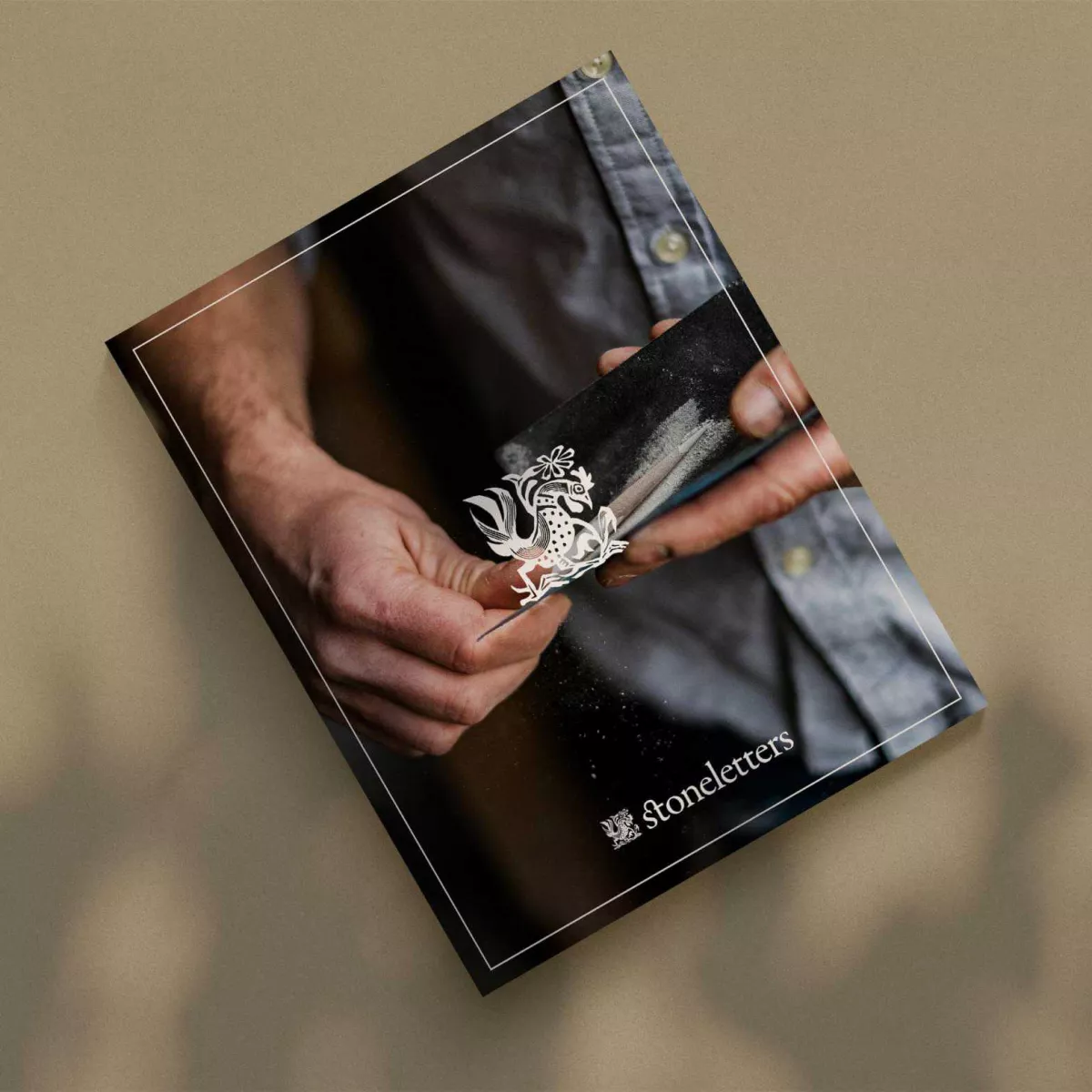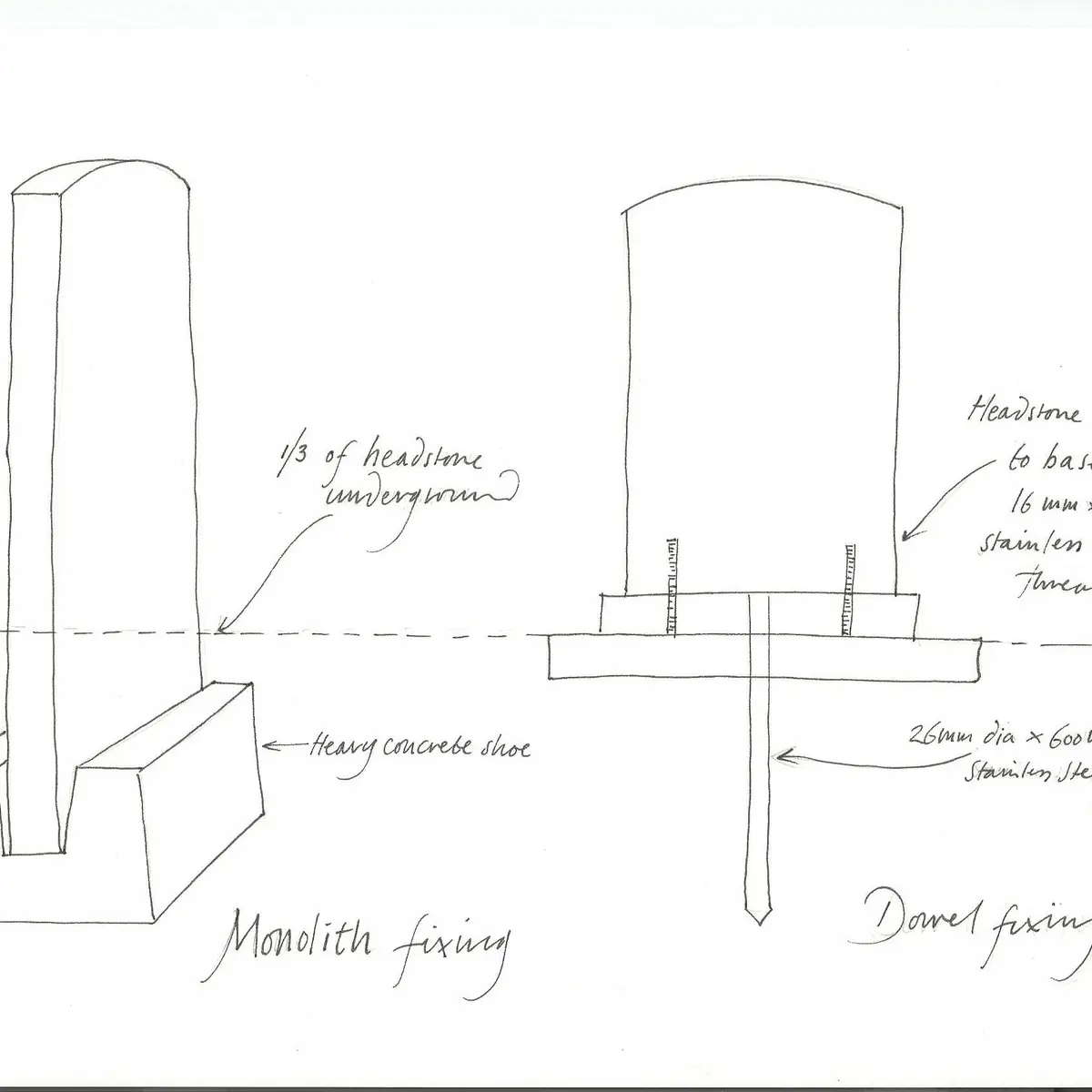By using this website, you agree to our privacy policy
×Contents
Installing or "fixing" a headstone
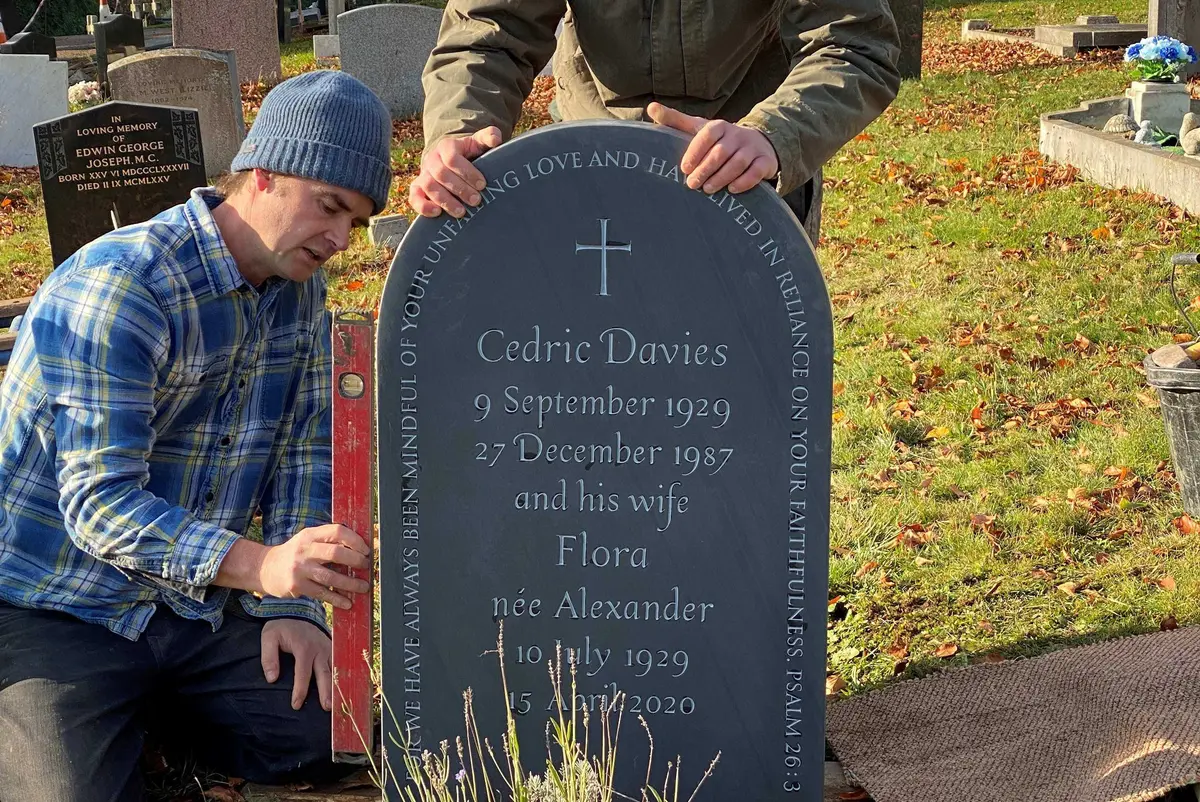
Life as a letter carver comes with many blessings. Unlike our cousin the stonemason, who finds him or herself on scaffolds come rain or shine, we have the benefit of being tucked away in the snug of a workshop during those cold and rainy days. The job also affords an excellent level of balance. Carving letters in stone is a privilege, but there’s also regular opportunities to go out and about – often to a beautiful parish church – to fix a headstone.
A fixing day has always felt like a special day.
A fixing day has always felt like a special day. It’s the culmination of our work and the work of the client who’s commissioned us. I’ve always thought the word ‘fixing’ to be slightly ambiguous, and I often find myself changing ‘headstone fixing’ to ‘headstone installation’, or clarifying my meaning if someone asks who’s not familiar with the parlance. “I’ve been on a headstone fixing,” I’d say, before adding: “Fixing as in fixing into place rather than fixing as in mending.”
“I’ve been on a headstone fixing,” I’d say, before adding: “Fixing as in fixing into place rather than fixing as in mending.”
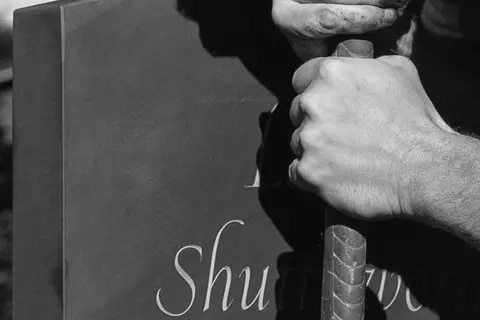
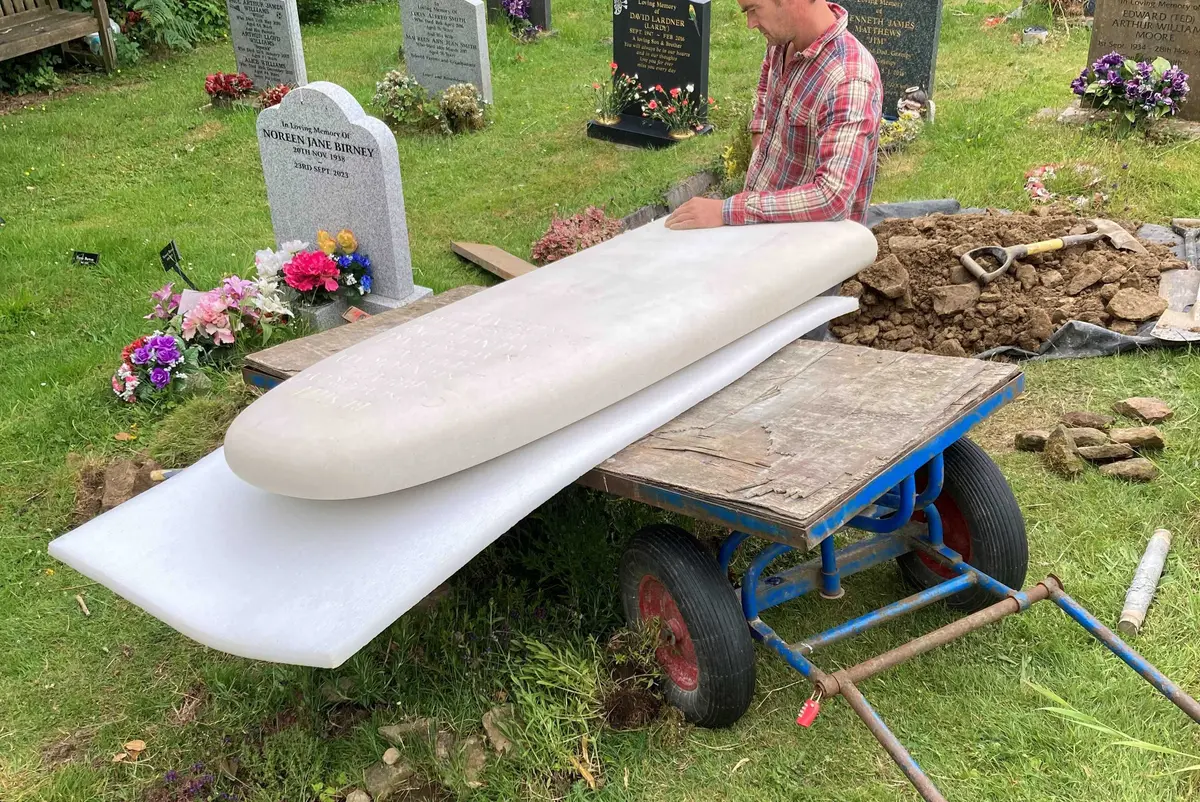
I’ll pack the van the day before. A headstone fixing is a lot more than digging a big hole and dropping the headstone in. The digging is an art in itself. We take a spade, a trench spade and a small shovel for that, as well as a pickaxe for stony ground (Stonesfield, I’m looking at you!). First, there are the obvious tools for the job: spades, wheelbarrow, sledge and lump hammer, spirit level. Then there’s the precast concrete shoe that we use as a base, kiln-dried sand for levelling up, and slate wedges for securing the headstone into place. And then things for cleaning: water, kitchen roll, wet and dry paper, nail brush. With all the tools secured in the van, Fergus will give me a hand to get the headstone in – with the aid of our trusty wooden rolling pin! A method so easy that I wouldn’t be surprised if the Egyptians built the pyramids using rolling pins!
A method so easy that I wouldn’t be surprised if the Egyptians built the pyramids using rolling pins!
The stone has foam softening above, below and surrounding it during transit. I always make sure the headstone doesn’t get damaged. Not on my watch!
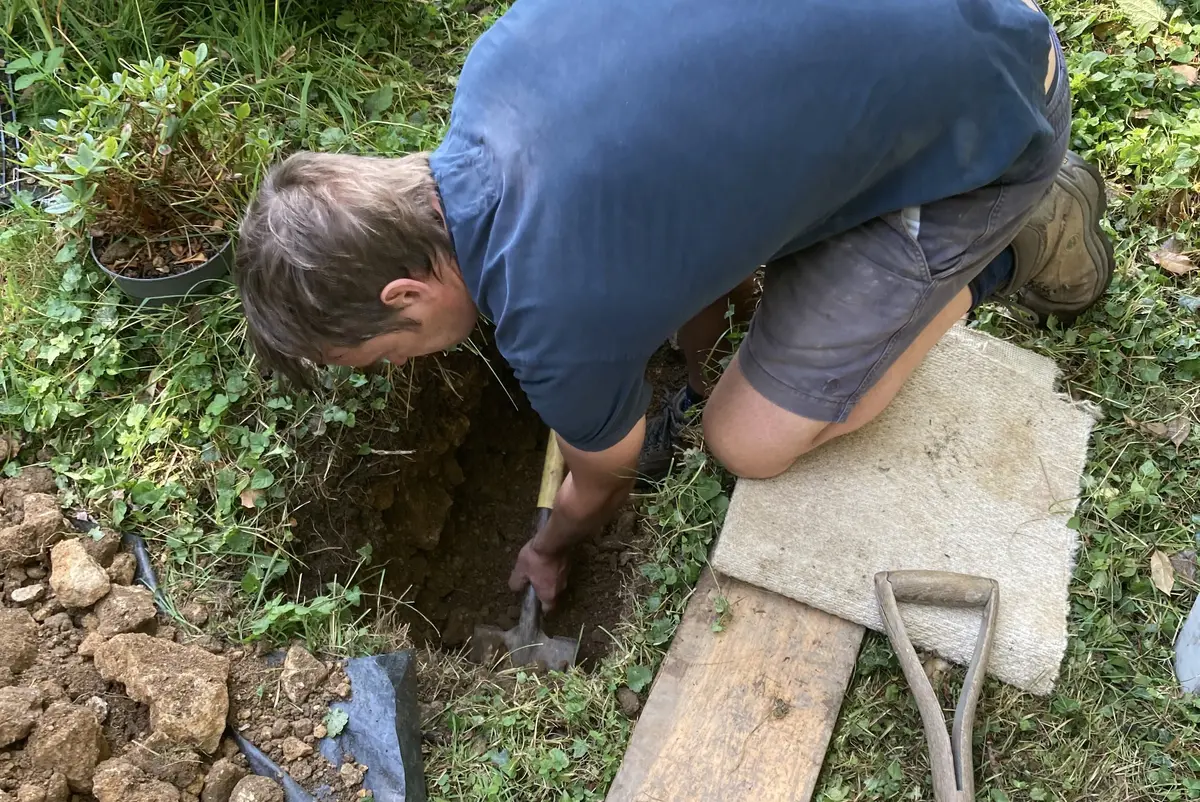
We book out the day when we go on a fix. This means we can focus on the fix without having one eye on the clock. It’s the most important part of the process, and as such, we give it our undivided attention.
It’s the most important part of the process, and as such, we give it our undivided attention.
When the client meets us at the churchyard or cemetery, he or she will lead us to the grave. This really is a blessing, especially in the sprawling London cemeteries. Sometimes the client will stay to watch, sometimes they might leave and pop back when the fix is almost finished.
This is when we get our wellies on, unfold the tarpaulin for the earth, reach for the spades and begin digging. We can dig anywhere between 19 and 22 inches depending on the size of the headstone. It’s probably a little bit cathartic for the client to see two people digging a deep hole and getting very muddy while doing it! When we reach the correct depth, we’ll make sure the base of the hole is nice and level and get the concrete shoe in. The old mantra “measure twice, cut once” is employed here…or rather “measure twice, fix once.”
The old mantra “measure twice, cut once” is employed here…or rather “measure twice, fix once.”
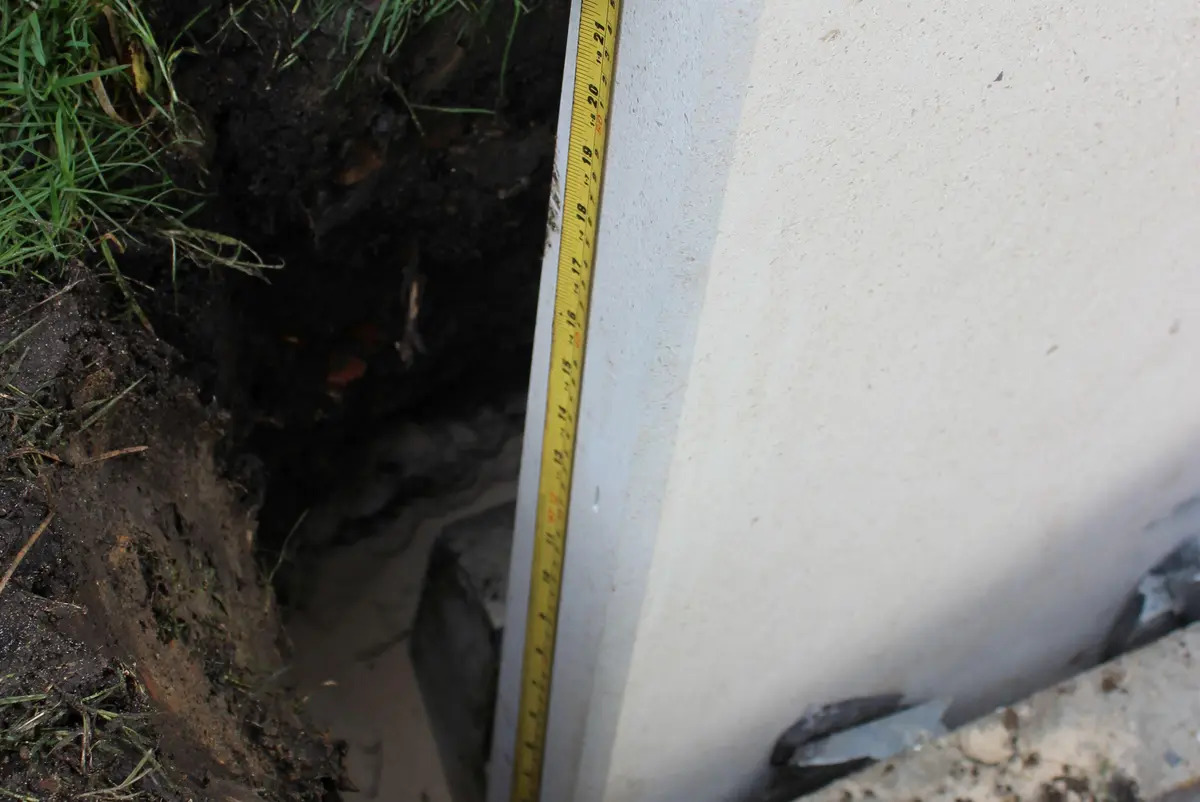
Once the shoe is in, we’ll make sure that it’s level and in line with the headstones in the row. Then we’ll carefully slide the headstone in, checking the level and line again. If it needs some minor adjustments, we can do that before we wedge the headstone into place. We do this with bricks and slate wedges between the bottom of the headstone and the shoe using a lump hammer, checking continually that the headstone remains level. This method locks the headstone firmly into place.
We don’t pour concrete in because the ground in churchyards and cemeteries in moving all the time. If a headstone’s been concreted in and it begins leaning, there’s very little you can do about it. But if it begins leaning in the future with our method, we can easily come along and “upright” the headstone again. Once the headstone’s been secured by the wedges, we’ll put the earth back around the headstone, tamping it down with the sledgehammer to secure it further. Then one of us will get rid of the excess earth in the wheelbarrow and find some turf to go around the base of the headstone and the other will pack up. When the turf is in place, the final job is to clean the headstone with water and kitchen roll.
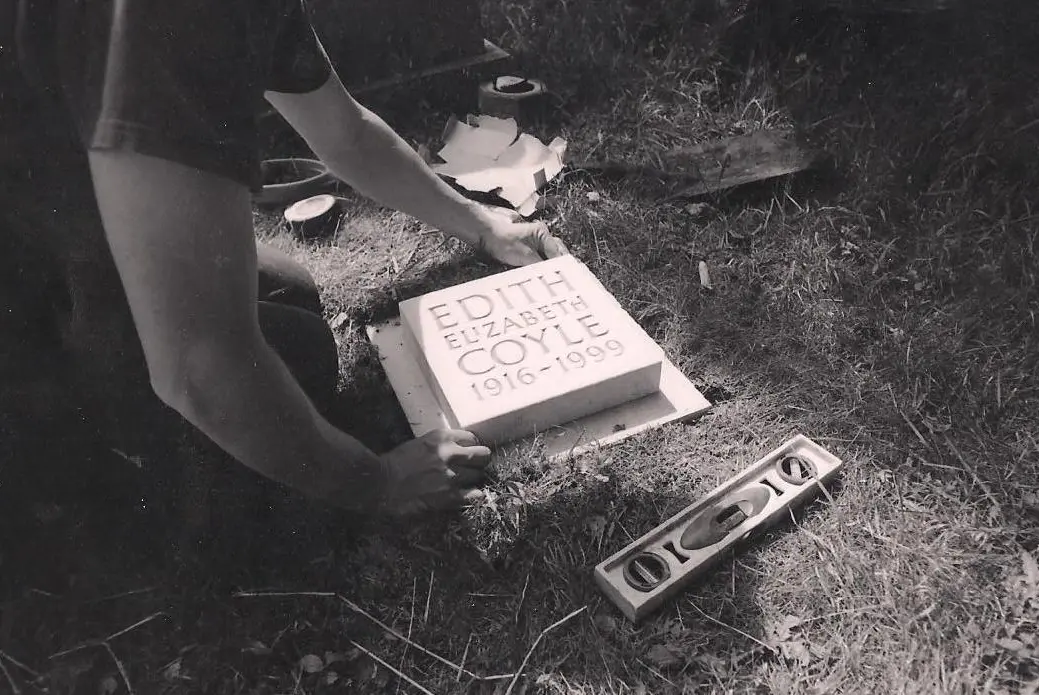
I’ve always found it nice to chat to the client during a fix. In certain circumstances, the occasion will be sombre - and justifiably so - but quite often the client has a thoughtful, reflective but ultimately kindly energy. Of course it’s a sad occasion. After all, this is the last thing someone can do for a loved one. But the process of commissioning a headstone with us is a very thoughtful, organic and creative collaboration between client and carver, and I always get a sense that this appreciation is expressed during a fix. Perhaps the ambiguity of the word ‘fix’ is a good thing. Fix as in fix into place but also fix as in mend. A process of fixing, a process of mending.
Perhaps the ambiguity of the word ‘fix’ is a good thing. Fix as in fix into place but also fix as in mend. A process of fixing, a process of mending.
This article was written by our long-term assistant Tom Wiggins. For more of his wonderful writing and poetry visit https://thesensitivebore.blogs...

Fergus Wessel
Designer and letter-carver
Fergus created Stoneletters Studio in 2003, after training at the Kindersley Workshop. He is a member of the prestigious Master Carver's Association.
MORE ARTICLES
Explore


Request our free booklet today
- © 2025 Stoneletters
- Legal notice
- Privacy policy
- Disclaimer
